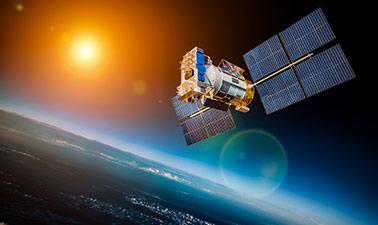The online Doppler effect simulations on this page allow us to better understand the scientific fundamentals of this important phenomenon. We will discover how the Doppler effect works, what redshift and blueshift are, and some of the important applications of this effect.
What is the Doppler effect
The Doppler effect is a phenomenon that occurs when there is a change in the perceived frequency of a wave due to relative motion between the source of the wave and the observer. This effect can be observed in different types of waves, such as sound and light, and plays an important role in various fields of study, from astronomy to medicine.
Explanation of the Doppler effect
The Doppler effect is based on the idea that when a wave source approaches an observer, the waves are compressed, resulting in an increase in the perceived frequency. On the other hand, when the source moves away, the waves elongate, resulting in a decrease in the perceived frequency. This is because the relative motion between the source and the observer affects the wavelength of the wave.
Redshift and blueshift are phenomena that occur when light emitted by an object changes color due to its relative motion with respect to the observer, and are an application of the Doppler effect in electromagnetic waves.
Redshift
This occurs when an object, such as a star or galaxy, moves away from the observer. In this case, the light waves are stretched, increasing their wavelength and shifting toward the red end of the visible spectrum. This means that the light we receive has a lower frequency and a redder color.
Blueshift
This occurs when an object moves closer to the observer. Here, the light waves are compressed, reducing their wavelength and shifting toward the blue end of the visible spectrum. The light has a higher frequency and a bluer color.
Applications of the Doppler effect
The Doppler effect has multiple practical applications in different fields of science and technology. Here are some examples that show how a seemingly simple physical phenomenon has a fundamental impact on our daily lives and scientific progress.
The Doppler effect in sound
In the case of sound, the Doppler effect can often be experienced when listening to an ambulance siren or police car rapidly approaching and then moving away. As the vehicle approaches, the sound appears to be higher pitched, with a higher frequency, and as it moves away, the sound appears to be lower pitched, with a lower frequency.
The Doppler effect in astronomy
In astronomy, the Doppler effect is used to determine the motion of stars and galaxies. By observing the redshift or blueshift of the spectral lines of light emitted by these celestial objects, scientists can infer whether they are moving away from or toward the Earth, as well as determine their relative velocity.
The Doppler effect in medicine
In medicine, the Doppler effect is used in techniques such as Doppler ultrasound, which makes it possible to visualize and analyze blood flow in the human body. By using ultrasound waves, the change in the return frequency of the waves reflected by the moving red blood cells can be measured. This provides valuable information about the state and speed of blood flow in specific blood vessels.
The Doppler effect in RADAR
The Doppler effect is essential in radars, which emit waves that bounce off moving objects and change frequency depending on their speed. This variation allows for the accurate measurement of vehicle speed in speed checks and the analysis of weather patterns, such as storms, helping in the prediction of climatic phenomena and road safety.
In short, these online Doppler effect simulations will show you in a simple way what this important scientific phenomenon is all about. Don’t miss them!
Explore the exciting STEM world with our free, online simulations and accompanying companion courses! With them you'll be able to experience and learn hands-on. Take this opportunity to immerse yourself in virtual experiences while advancing your education - awaken your scientific curiosity and discover all that the STEM world has to offer!
Doppler effect simulations
- Ambulance
- Effect
Ambulance siren
When an ambulance approaches the sound of its siren becomes higher pitched, i.e. its wavelength decreases, and when it moves away it becomes lower pitched, i.e. its wavelength increases. A similar effect occurs with light. When a star moves away the wavelength of its light increases.
Check the difference in the sound of the siren when the ambulance is approaching and when it is moving away.
Doppler effect and redshift
When a star moves away, the wavelength of its light becomes longer, which causes its emission spectrum to approach red frequencies, producing an effect known as redshift.
Check in our simulation what happens when the star is moved closer or farther away.
Giants of science
“If I have seen further, it is by standing on the shoulders of giants”
Isaac Newton

Léon Foucault
–

Johannes Kepler
–
Become a giant


The Radio Sky II: Observational Radio Astronomy



The Radio Sky I: Science and Observations



Our Place in the Universe



Sensing Planet Earth – From Core to Outer Space



Our Global Ocean – An Introduction Course



Sensing Planet Earth – Water and Ice



Introduction to Deep Earth Science




























